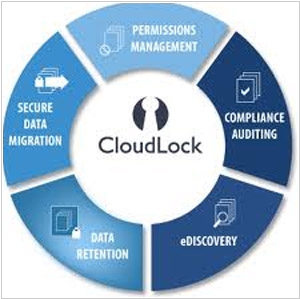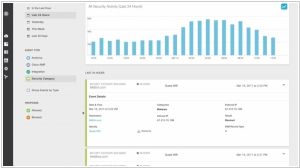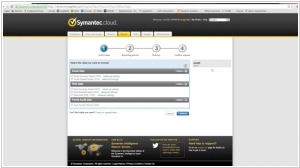Cisco Umbrella vs Symantec Web Security
August 05, 2023 | Author: Michael Stromann
Cisco Umbrella and Symantec Web Security are both popular web security solutions, but they have key differences:
1. Approach: Cisco Umbrella is a cloud-based security platform that focuses on providing DNS-layer security. It protects users from accessing malicious websites or content by blocking requests at the DNS level. Cisco Umbrella also offers advanced threat intelligence, web filtering, and content filtering capabilities.
Symantec Web Security, on the other hand, provides comprehensive web security through a combination of secure web gateways and cloud-based technologies. It offers features such as URL filtering, web threat protection, data loss prevention (DLP), and advanced malware detection. Symantec Web Security emphasizes a multi-layered approach to protect users from web-based threats.
2. Deployment Options: Cisco Umbrella is primarily cloud-based and offers easy and scalable deployment. It provides protection for users, regardless of their location, by redirecting their DNS requests through the Cisco Umbrella network. This makes it suitable for both on-premises and remote users.
Symantec Web Security offers both on-premises and cloud-based deployment options. It provides flexibility for organizations that require on-premises control or have specific compliance requirements.
3. Integration: Cisco Umbrella integrates well with other Cisco security products and offers seamless integration with Cisco's broader security ecosystem. This allows organizations to build a comprehensive security infrastructure with unified management and visibility.
Symantec Web Security integrates with Symantec's broader portfolio of security solutions, including endpoint security and data loss prevention. It offers integration capabilities with other Symantec products to provide a holistic security approach.
4. Scope of Features: Cisco Umbrella primarily focuses on DNS-layer security and web filtering capabilities. It provides robust protection against web-based threats and offers granular control over internet access and content filtering.
Symantec Web Security offers a broader range of web security features, including URL filtering, advanced threat protection, DLP, SSL inspection, and cloud access security broker (CASB) functionality. It caters to organizations that require more comprehensive web security features.
See also: Top 10 Cloud Security Software
1. Approach: Cisco Umbrella is a cloud-based security platform that focuses on providing DNS-layer security. It protects users from accessing malicious websites or content by blocking requests at the DNS level. Cisco Umbrella also offers advanced threat intelligence, web filtering, and content filtering capabilities.
Symantec Web Security, on the other hand, provides comprehensive web security through a combination of secure web gateways and cloud-based technologies. It offers features such as URL filtering, web threat protection, data loss prevention (DLP), and advanced malware detection. Symantec Web Security emphasizes a multi-layered approach to protect users from web-based threats.
2. Deployment Options: Cisco Umbrella is primarily cloud-based and offers easy and scalable deployment. It provides protection for users, regardless of their location, by redirecting their DNS requests through the Cisco Umbrella network. This makes it suitable for both on-premises and remote users.
Symantec Web Security offers both on-premises and cloud-based deployment options. It provides flexibility for organizations that require on-premises control or have specific compliance requirements.
3. Integration: Cisco Umbrella integrates well with other Cisco security products and offers seamless integration with Cisco's broader security ecosystem. This allows organizations to build a comprehensive security infrastructure with unified management and visibility.
Symantec Web Security integrates with Symantec's broader portfolio of security solutions, including endpoint security and data loss prevention. It offers integration capabilities with other Symantec products to provide a holistic security approach.
4. Scope of Features: Cisco Umbrella primarily focuses on DNS-layer security and web filtering capabilities. It provides robust protection against web-based threats and offers granular control over internet access and content filtering.
Symantec Web Security offers a broader range of web security features, including URL filtering, advanced threat protection, DLP, SSL inspection, and cloud access security broker (CASB) functionality. It caters to organizations that require more comprehensive web security features.
See also: Top 10 Cloud Security Software
Cisco Umbrella vs Symantec Web Security in our news:
2016. Cisco acquired cybersecurity-as-a-Service provider CloudLock

Cisco has revealed its intention to acquire CloudLock, a cloud-based security provider, for $293 million. CloudLock employs APIs to empower enterprises to apply and oversee security measures on shared and stored documents and other content within cloud-based applications. Its compatibility extends to popular applications like Office365, Google Drive, Salesforce, and numerous others. The primary focus of CloudLock lies in delivering robust security and enforcing policies to safeguard documents, regardless of the device used for accessing them. It also enables granular controls based on location, enhancing data protection capabilities.




